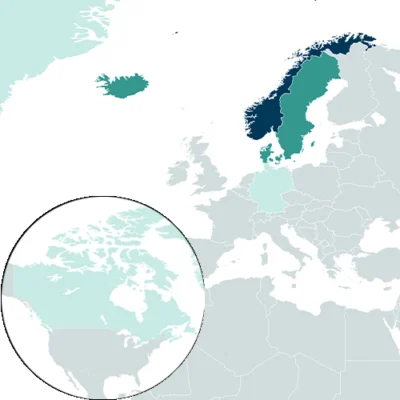NatuRE based SOLutions for sustainable use of high north marine biodiversity and ecosystems sErvices
Call
Duration
01/03/2025 – 29/02/2028
Total grant
Approx. 1.2 mil. €
More information
Margrete Emblemsvåg, margrete.emblemsvag@moreforsking.no
Raul Primicerio, raul.primicerio@uit.no
Partners of the project
- Møreforsking AS, Ålesund, Norway
- Department of Arctic and Marine Biology, The Arctic University of Norway, Tromsø, Norway
- Norwegian Institute for Nature Research, Tromsø, Norway
- Demersal Division, Marine and Freshwater Research Institute, Hafnarfjörður, Iceland
- National Institute of Aquatic Resources,
Technical University of Denmark, National Institute of Aquatic Resources, Kgs. Lyngby, Denmark - Stockholm Resilience Centre, University of Stockholm, Stockholm, Sweden
- Ecosystem Processes, Institute of Marine Research, Bergen, Norway
- Fish and Shellfish, Greenland Institute of Natural Resources, Nuuk, Greenland
- Sea Fisheries, Thünen Institute of Sea Fisheries, Bremerhaven, Germany
- Biology Department, University of Laval, Quebec, Canada

Context
Marine biodiversity is threatened by multiple anthropogenic drivers, impacting ecosystem goods and services, particularly in high-latitude regions facing rapid climate change and expanding human activities like offshore energy and shipping. To alleviate biodiversity loss of marine ecosystems, the EU Restoration Plan for Biodiversity Strategy includes a significant commitment to protect at least 30% of the ocean within European waters by 2030 (EC,2020).
However, in high latitude regions, the implementation of NbS to mitigate the cumulative risk to biodiversity is still at an early stage with limited considerations of consequences for human well-being and transformative change. RESOLVE aims to address this knowledge gap by evaluating the impact of NbS on marine biodiversity, ecosystem services, and their broader socio-economic effects in the high north. The project will focus on NbS consisting of area-based management tools, specifically marine protected areas (MPAs), other effective area-based conservation measures (OECMs) and ecologically or biologically significant areas (EBSAs).
Main objectives
The main objectives of RESOLVE are to 1) assess the mitigation potential of NbS under climate-driven biodiversity change by investigating taxonomic and functional turnover and trends within and outside of MPAs, OECMs and EBSAs; 2) evaluate NbS trade-offs and synergies with human well-being in light of patterns and trends in ecosystem services; 3) co-design NbS that consider dimensions of transformative change by exploring NbS contribution to climate mitigation and dynamic MPAs solutions.
Main activities
RESOLVE is a transdisciplinary project with case studies in the Barents Sea, Iceland, and eastern and western Greenland. The key activities include:
- Integrate the evaluation of different area-based management measures and explore new NbS options like dynamic MPAs for climate adaptation. Options will be critically evaluated within existing legal and management frameworks;
- Assess NbS’ mitigation potential using biodiversity indicators aligned with the Essential Biodiversity Variables (EBV) framework, focusing on ecological scales, trends, and cross-scale analyses. A transnational approach is employed to evaluate NbS networks, considering connectivity and large-scale ecological processes;
- Address the implications of NbS for ecosystem goods and services to support human well-being and propose management options for balancing trade-offs and optimizing synergies;
- Explore how NbS can drive transformative shifts in conservation strategies, promoting ecosystem resilience and climate mitigation.
Climate-driven changes in species and habitat distributions will impact the implementation of area-based conservation measures, as well as the connectivity between protected areas. Adaptive strategies that account for climate-induced biodiversity changes are essential. RESOLVE will provide a comprehensive knowledge base on the benefits and limitations of existing and planned NbS for biodiversity, human well-being, and transformative change, offering guidelines for novel NbS management and governance. Its holistic approach aims to enhance understanding of NbS’ societal and policy impacts, with strong stakeholder and policy-maker engagement, ensuring significant potential for shaping policy and governance.